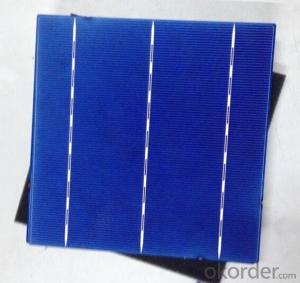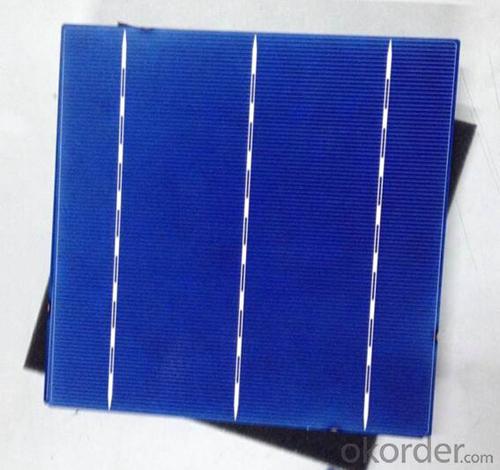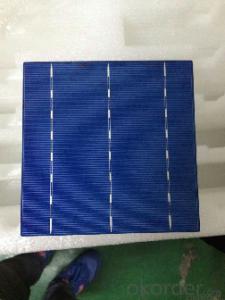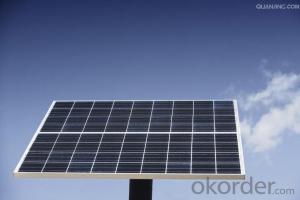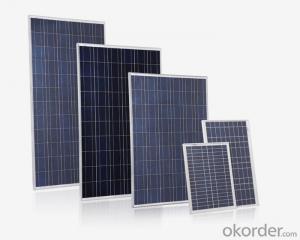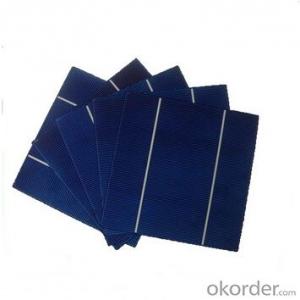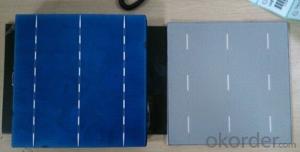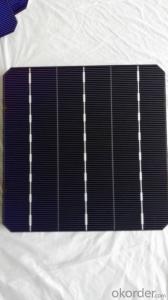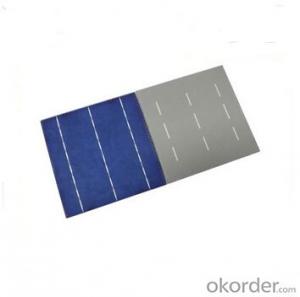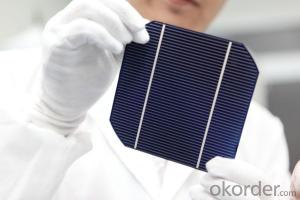Thin Film Solar Cells for Sale - Polycrystalline Silicon Solar Cells 156mm
- Loading Port:
- Shanghai
- Payment Terms:
- TT or LC
- Min Order Qty:
- 5000 pc
- Supply Capability:
- 9000000 pc/month
OKorder Service Pledge
OKorder Financial Service
You Might Also Like
Instruction of Polycrystalline Silicon Solar Cells156mm:
Solar cells is made by solar wafer, it has three categories of solar cell right now, monocrystalline polycrystalline and thin film,
These cells are entirely based around the concept of ap-n junction, which is the critical part of solar module, it is the part that can convert the light energy into electricity, the thickness is from 180um to 200um, with even busbars to conduct electricity, textured cell can decrease diffuse reflection; they are often electrically connected and encapsulated as a module.
Photovoltaic modules often have a sheet of glass on the front (sun up) side, allowing light to pass while protecting semiconductor wafers from abrasion and impact due to wind-driven debris, rain, hail, etc.
Solar cells are also usually connected in series in modules, creating an additive voltage.
Connecting cells in parallel will yield a higher current;With high quality and stable quality.
Our Cells can greatly improve the performance of Solar Modules.
Polycrystalline Silicon Solar Cells 156mm Advantage:
• High efficiency and stable performance in photovoltaic conversion.
• Advanced diffusion technique ensuring the homogeneity of energy conversion efficiency of the cell.
• Advanced PECVD film forming, providing a dark blue silicon nitride anti-reflection film of homogenous color and attractive appearance.
• High quality metal paste for back surface and electrode, ensuring good conductivity, high pulling strength and ease of soldering.
• High precision patterning using screen printing, ensuring accurate busbar location for ease with automatic soldering a laser cutting.
Polycrystalline Silicon Solar Cells Images:
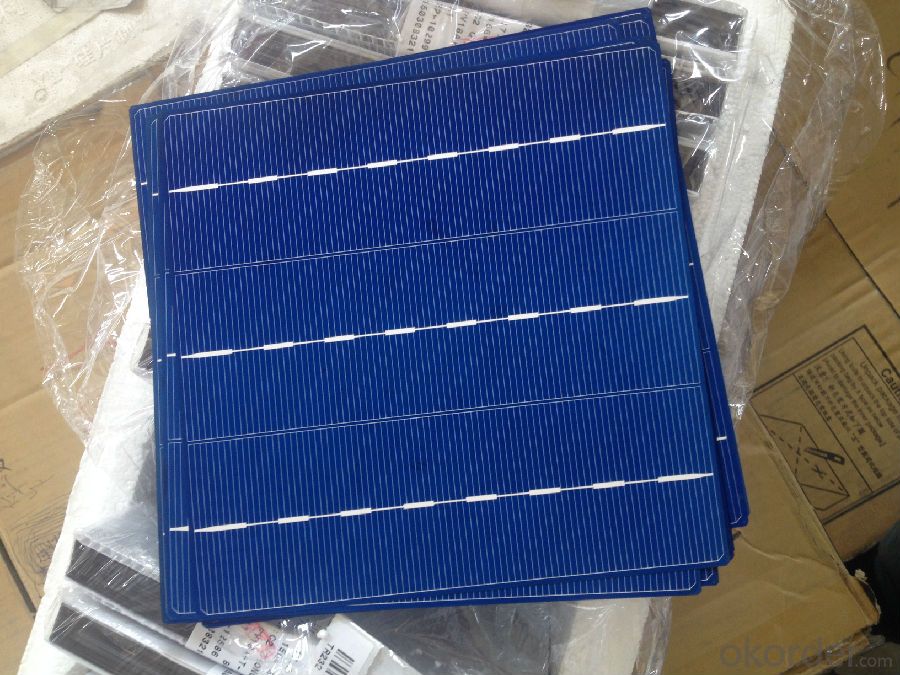
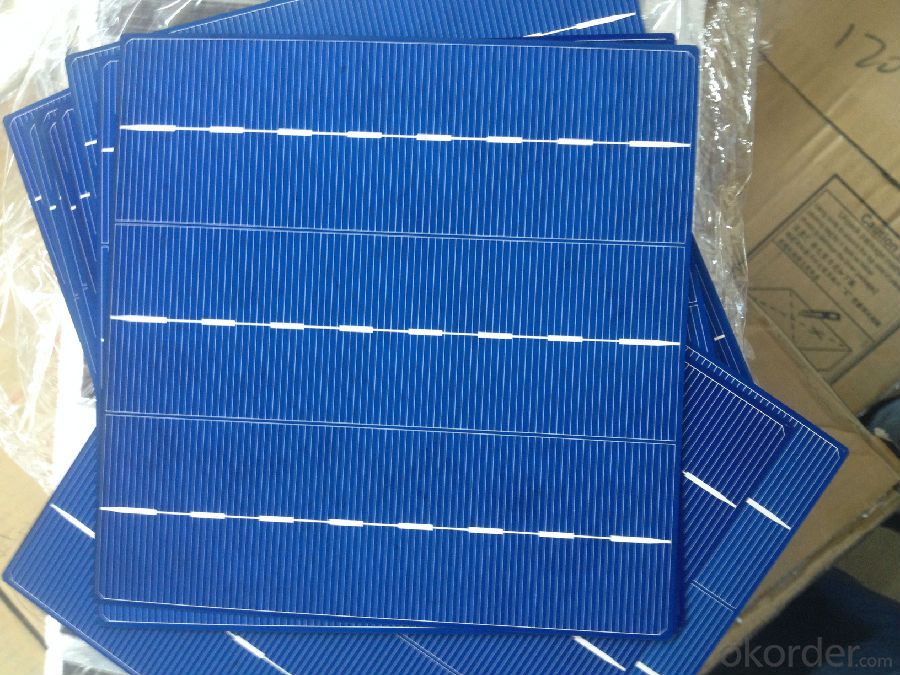
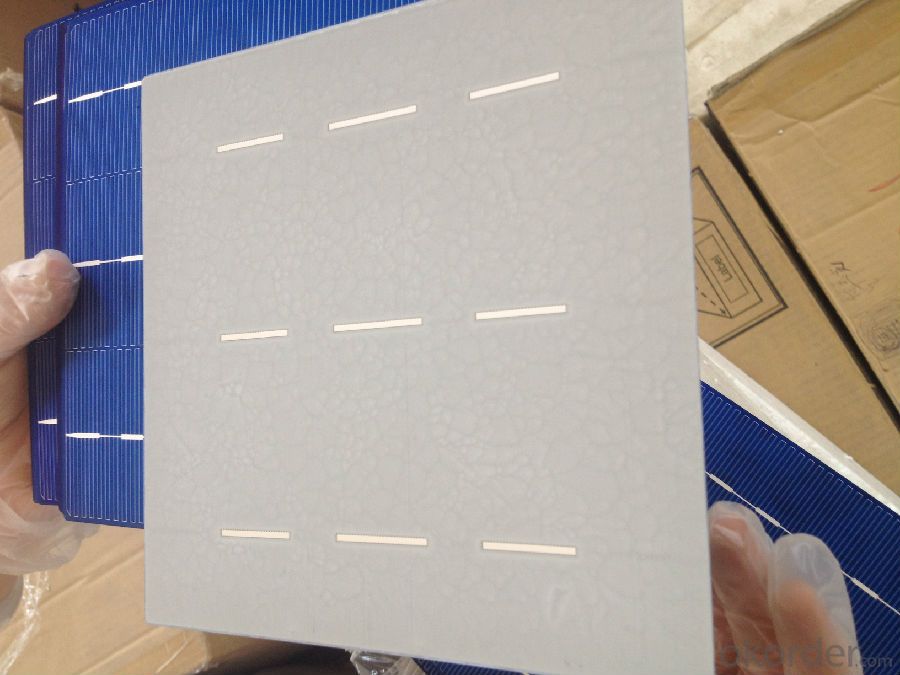
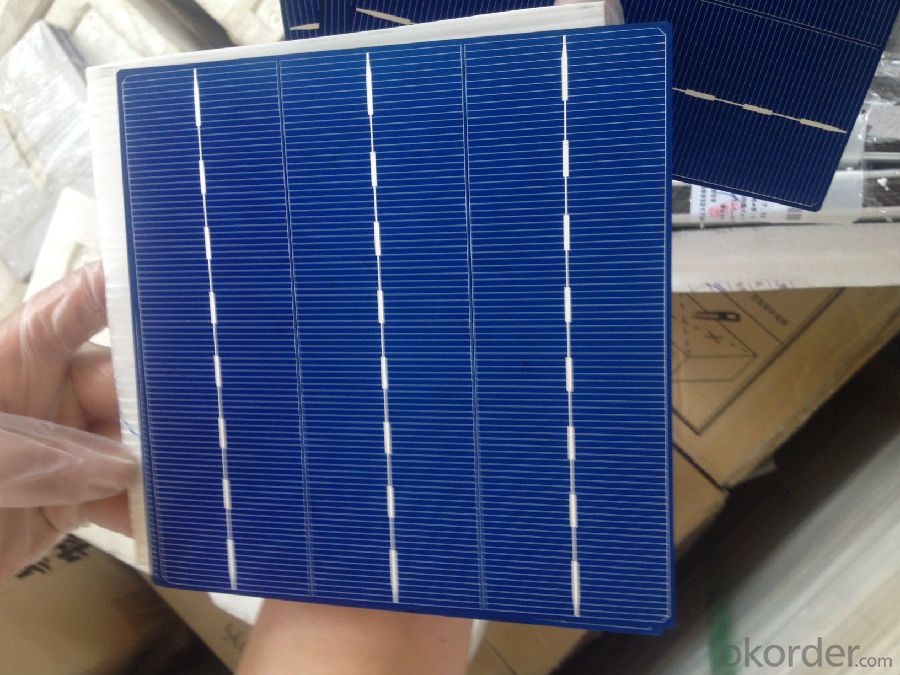
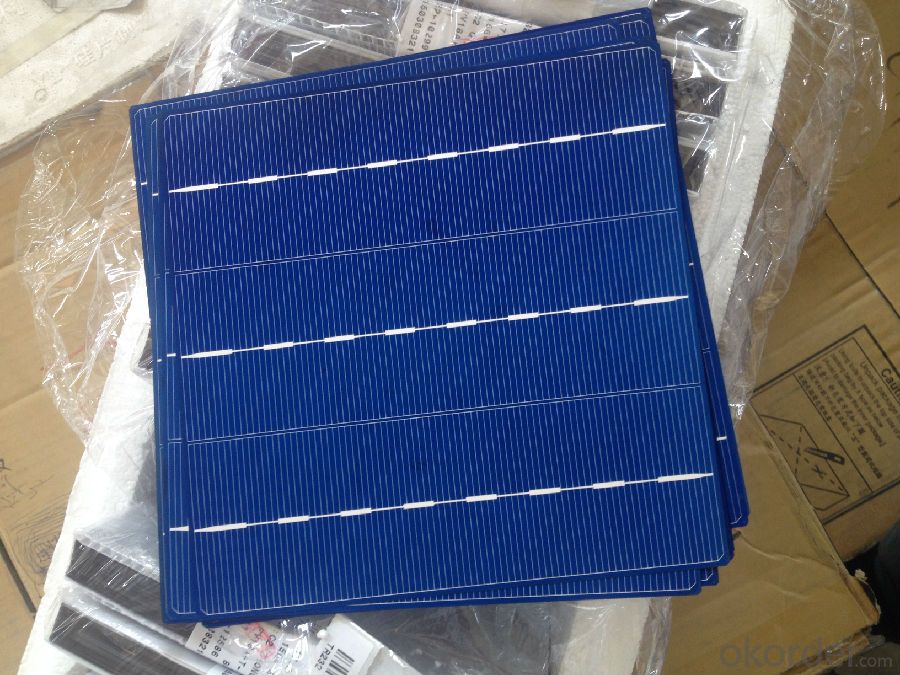
Specification of Polycrystalline Silicon Solar Cells:
Mechanical data and design |
Format - 156 mm × 156 mm ± 0.5 mm |
Thickness- - 200 μm ± 20 μm |
Front (-) - 1.4 mm bus bars (silver),blue anti-reflection coating (silicon nitride) |
Back (+) - 2 mm wide soldering pads (silver) back surface field (aluminium) |
Temperature Coefficient of Cells |
Voc. Temp .coef.%/K -0.364%/K |
Isc . Temp .coef.%/K +0.077%/K |
Pm. Temp. coef.%/K -0.368%/K |
Electrical Characteristic |
Efficiency (%) Pmpp (W) Umpp (V) Impp (A) Voc (V) Isc (A) |
18.00% 4.380 0.538 8.141 0.634 8.740 |
17.90% 4.356 0.538 8.097 0.634 8.725 |
17.80% 4.331 0.537 8.065 0.633 8.710 |
17.70% 4.307 0.536 8.035 0.632 8.695 |
17.60% 4.283 0.535 8.006 0.631 8.680 |
17.50% 4.258 0.534 7.974 0.630 8.665 |
17.40% 4.234 0.533 7.944 0.629 8.650 |
17.30% 4.210 0.532 7.914 0.628 8.635 |
17.20% 4.185 0.531 7.88 -- 0.627 -- 8.620 |
17.10% 4.161 0.530 7.851 0.626 8.605 |
17.00% 4.137 0.529 7.820 0.625 8.590 |
Intensity Dependence |
Intensity [W/m2] Isc× [mA] Voc× [mV] Pmpp |
1000 1.00 1.000 1.00 |
900 0.90 1.000 0.90 |
800 0.80 0.99 0.80 |
500 0.50 0.96 0.49 |
300 0.30 0.93 0.29 |
200 0.20 0.92 0.19 |
IV Curve

FAQ of Polycrystalline Silicon Solar Cells
We have organized several common questions for our clients,may help you sincerely:
①What price for each watt?
It depends on the efficiency of the solar cell, quantity, delivery date and payment terms.
②How long can we receive the product after purchase?
In the purchase of product within three working days, We will arrange the factory delivery as soon as possible. The pecific time of receiving is related to the state and position of customers.Commonly 7 to 10 working days can be served.
③Can you provide the peripheral products of the solar panels, such as the battery, controller, and inverter? If so, can you tell me how do they match each other?
Yes, we can, we have two companies for solar region, one is CNBM International, the other is CNBM engineering Co.
We can provide you not only the solar module but also the off grid solar system, we can also provide you service with on grid plant.
④What is your warranty of solar cell?
Our product can promise lower than 0.3% open box crack, we support claim after opening the box if it has crackm color difference or sth, the buyer should give pictures immediately, we can not accept the claim after the solar cell has assembled to solar panel.
• Timeliness of delivery
• ⑤How do you pack your products?
We have rich experience on how to pack the solar cell to make sure the safety on shipment, we could use wooden box or pallet as buyer's preference.
⑥ Can you do OEM for us?
Yes, we can.
- Q: Can solar cells be used to power security systems?
- Yes, solar cells can be used to power security systems. Solar panels can convert sunlight into electricity, which can then be used to power security cameras, sensors, and other devices in a security system. This eliminates the need for traditional power sources and reduces reliance on the electrical grid, making solar-powered security systems more flexible and cost-effective.
- Q: Can solar cells be used in schools or educational institutions?
- Yes, solar cells can definitely be used in schools or educational institutions. Installing solar panels in schools not only helps in reducing electricity costs but also provides an opportunity to educate students about renewable energy sources and sustainability. It allows schools to become more environmentally conscious by reducing their carbon footprint and serves as a great educational tool to teach students about solar energy and its benefits.
- Q: Are solar cells impacted by shading?
- Yes, solar cells are significantly impacted by shading. Even a small amount of shading, such as from trees or buildings, can drastically reduce the efficiency and output of a solar cell. Shading causes certain parts of the cell to receive less sunlight, resulting in decreased energy production. Therefore, it is important to install solar panels in areas with maximum sunlight exposure to optimize their performance.
- Q: What is the difference between a monocrystalline and polycrystalline solar cell?
- The main difference between a monocrystalline and polycrystalline solar cell lies in their composition and manufacturing process. Monocrystalline solar cells are made from a single, high-purity silicon crystal. This results in a uniform structure with a consistent and orderly arrangement of atoms. Monocrystalline cells are known for their high efficiency and sleek appearance, as they typically have a black or dark blue color. On the other hand, polycrystalline solar cells are made from multiple silicon crystals. These crystals are smaller and not as perfectly aligned, leading to a more random arrangement of atoms. Polycrystalline cells are usually recognizable by their bluish hue and a fragmented appearance. In terms of efficiency, monocrystalline solar cells tend to have a slightly higher efficiency rate compared to polycrystalline cells. However, recent advancements in technology have narrowed this efficiency gap, and polycrystalline cells are now approaching the efficiency levels of monocrystalline cells. Another difference is the cost. Monocrystalline solar panels are generally more expensive due to the higher purity of silicon required and the more complex manufacturing process. Polycrystalline panels, on the other hand, are more cost-effective and offer a lower price per watt. In summary, while monocrystalline solar cells have higher efficiency and a more uniform appearance, polycrystalline cells are more cost-effective and have made significant improvements in efficiency in recent years. The choice between the two ultimately depends on individual preferences, budget, and specific project requirements.
- Q: What is the role of solar cells in powering agricultural irrigation?
- The role of solar cells in powering agricultural irrigation is to harness the energy from the sun and convert it into electricity, which can then be used to power irrigation systems. By using solar cells, farmers can reduce their reliance on fossil fuels and decrease their carbon footprint, while also ensuring a consistent and sustainable source of power for their irrigation needs. This renewable energy source helps to make agricultural irrigation more efficient, cost-effective, and environmentally friendly.
- Q: How do solar cells perform in dry desert conditions?
- Solar cells perform exceptionally well in dry desert conditions. The intense sunlight and lack of humidity in desert environments create optimal conditions for the generation of solar energy. The absence of clouds and minimal air pollution allows solar cells to efficiently convert sunlight into electricity, resulting in higher energy output. Additionally, the heat in desert regions can increase the efficiency of solar cells, as their performance typically improves with higher temperatures. Therefore, solar cells are highly effective and efficient in dry desert conditions.
- Q: How many types of solar cells are now being used in real life?
- 3 kinds of solar cells, Silicon-based, organic, chemical.
- Q: How are solar cells installed?
- Solar cells are typically installed on rooftops or open ground areas. First, the installation site is surveyed to determine the best location and angle for maximum sunlight exposure. Then, the solar panels are mounted onto a structure using brackets or frames. The panels are interconnected and wired to an inverter, which converts the direct current (DC) generated by the panels into usable alternating current (AC) electricity. Finally, the system is connected to the electrical grid or a battery storage system, allowing the generated solar energy to be used for powering homes or businesses.
- Q: How do monocrystalline solar cells differ from polycrystalline solar cells?
- Monocrystalline solar cells are made from a single crystal structure, typically silicon, which allows for higher efficiency and performance in converting sunlight into electricity. On the other hand, polycrystalline solar cells are made from multiple crystal structures, resulting in a lower efficiency but a more cost-effective option.
- Q: Can solar cells be used on spacecraft?
- Yes, solar cells can be used on spacecraft. In fact, solar cells are commonly utilized on spacecraft to generate electricity by converting sunlight into usable energy. This provides a reliable and renewable source of power for various systems and instruments onboard the spacecraft.
Send your message to us
Thin Film Solar Cells for Sale - Polycrystalline Silicon Solar Cells 156mm
- Loading Port:
- Shanghai
- Payment Terms:
- TT or LC
- Min Order Qty:
- 5000 pc
- Supply Capability:
- 9000000 pc/month
OKorder Service Pledge
OKorder Financial Service
Similar products
Hot products
Hot Searches
Related keywords
